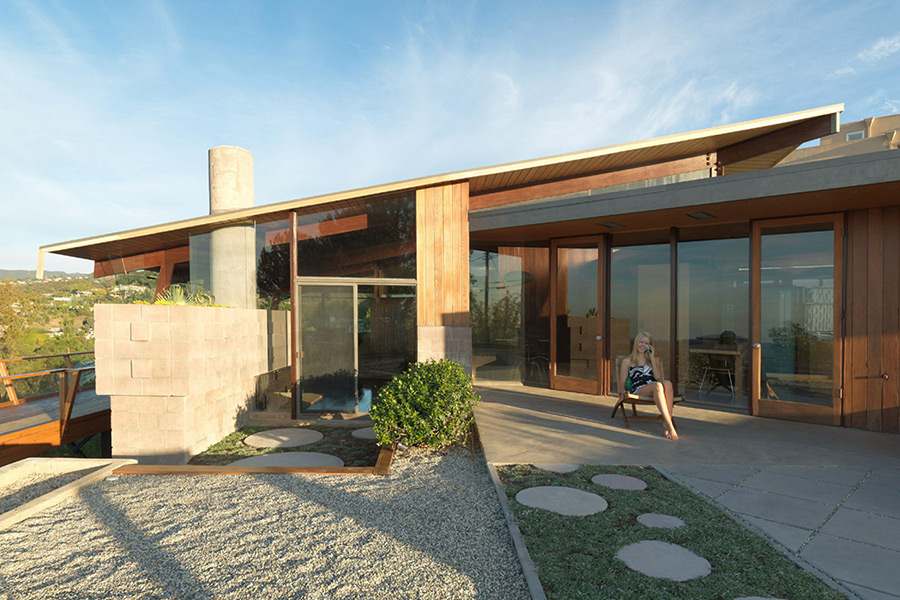
Crestwood Hills: The Chronicle of a Modern Utopia
By Cory Buckner
Angel City Press, $35
A long time ago, in the wake of World War II, Los Angeles appeared as a welcoming paradise for returning veterans and footloose others in search of new beginnings.
Jobs beckoned and commuting by car or transit was manageable. There was not yet heavy traffic or smog; there was only sunny days and the promise of suburbia—the good life.
The only thing missing was affordable housing. People slept in makeshift Quonset huts and tents in city parks, while lines to purchase new makeshift houses formed over night and snaked for blocks. Then, as now, city government expressed concern and did little.
Crestwood Hills: The Chronicle of a Modern Utopia by Cory Buckner tells the story of an optimistic approach to housing from the period, when four returning veterans who bonded as studio musicians decided to build a cluster of neighboring homes for themselves, sharing some common play space and a swimming pool. Other musicians became interested, and the group, christened as the Mutual Housing Association (MHA), grew to 25, then 100, and after some publicity, to 500. People eagerly signed up, and by the end of 1946, with some bickering and conservative diatribes, Los Angeles had its first large-scale cooperative housing development.
As author—and not incidentally architect—Buckner astutely writes, the goal of the MHA was not to build tacky houses, but rather “innovative structures that could be erected simply and cheaply and that reflected the politically progressive visions of the founding members.” A design team consisting of Whitney R. Smith, A. Quincy Jones, and Edgardo Contini was selected, and plans grew to include—in addition to the community swimming pool—tennis courts, nursery schools, and a cooperative market. In time, other architects became involved, retained by individual cooperative members with designated sites.
A hilly, raw 1,800-acre tract above then-rural Brentwood was purchased, and 350 lots were bulldozed. Construction began by 1950, despite a recalcitrant Federal Housing Administration (FHA) and its insistence on discriminatory race restrictions—supposedly meant to protect their investment, but eventually ruled unconstitutional by the Supreme Court. Several members resigned from the MHA over this issue, which also undermined several similar efforts at the time in northern California.
The FHA also initially opposed the cooperative’s modernist design guidelines, which were based in part on LA’s famed Case Study Houses. Only a delegation of architects and others lobbying in Washington D.C. reversed that restriction, and today, despite the ravages of fires and insensitive owners, 47 remaining designs distinguish Crestwood Hills as a designated Los Angeles Historic-Cultural Monument.
Buckner, who with her late architect husband Nick Roberts restored three of the landmark homes, details the community’s architecture, aided by a wealth of photos and illustrations. The total is a rich history of a unique community that distinguishes Southern California’s oft-overlooked social and architectural heritage.